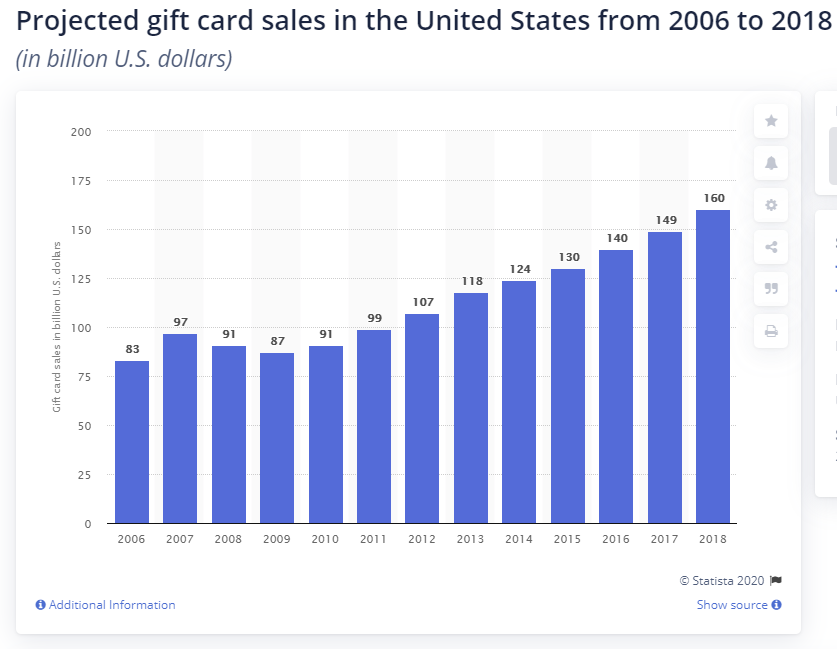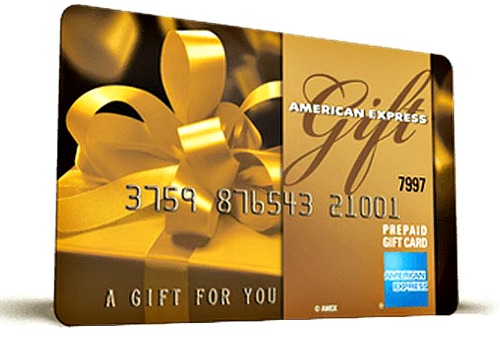Gift cards
Shoppers love them, and small businesses are harvesting the profits of one of the retail industry’s most positive trends.
Neiman Marcus sold the first gift cards in 1994 as novelty items. In 1995 Blockbuster became the real pioneer in the gift card revolution.
Recipients of gift cards are more likely to visit the issuing business more than once, and often spend more than the value of the card and reload the card with a higher value than the original amount.
Although gift card programs had been used primarily by large vendors, small to mid-sized businesses (including franchisees) can benefit from implementing a gift card program. The majority of companies who apply gift card programs report an increase in their sales.
The best way to take full advantage of a gift card program is by using re-loadable gift cards. Reloading allows the user to add or “load” additional money onto a gift card once the initial value depleted—a great way to persuade repeat visits by customers.
Gift cards are prepaid forms of payment. A customer comes in and asks to buy a gift card (either for himself or for someone else), let say for $50.00. The merchant collects $50 (no tax on gift cards sale) and gives the customer a “Gift Card.”

Gift Card Delivery
Businesses usually offer Gift cards in one of the forms below or a combination of them:
1- Gift certificates: comprised of a booklet of paper gift card certificates are still popular. The merchants write a dollar amount on the certificate, and the customer pays the amount to receive the certificate and use it in the future.

2- Physical Gift Cards: The gift card is a plastic card with an account number embedded in the magnetic stripe or the form of a barcode printed on the card.
3- Digital or Virtual Gift Cards: A digital or virtual gift card is a bar code, QR Code, or just a simple text that represents the account number (or gift card number).
Plastic Gift Cards
Usually made from PVC, these cards come in white color, and by using a particular printer, the manufacturer prints the artworks on the gift card.

Other specifications of these cards are as follow:
- Thickness: 10, 20 or 30 millimeters
- Magnetic Stripe: 2 or 3 tracks of data
- Coercivity: A pattern of positive and negative magnetic fields, forms the information on a magnetic card. Coercivity is the metric that specifies the longevity of the magnetic stripe in retaining the information. So, when you order plastic gift cards, you need to know that Hi-Co cards have a longer life span than Lo-Co cards.
If your cards use a bar code instead of a magnetic stripe, you would probably pay less to purchase them, but keep in mind that the bar code usually fades out rather quickly.
Because both magnetic stripes and bar codes could become useless, you see the gift card number (account number) printed on the back of the card.
Needless to say that plastic cards, compare to the digital git cards, are more appealing. You can customize them with your logo and graphics. But they have some serious shortcomings:
- 1- Easy-to-lose
- 2- They cause more plastic pollution and end up in landfills (If not the Great Pacific garbage patch).
- 3- They wear out (the magnetic stripe, or the barcode) and become hard to use.
- 4- Require a specific device to read the account number. If your gift cards have a magnetic stripe, then you need the reader for that, and if you use a barcode on your gift cards, then a barcode scanner will be required.
Digital (Virtual) Gift Cards
These are products of digital age and developments in digital content delivery. The consumer pays to acquire a gift card number without any physical medium. The gift card number is then sent to an email address, or reaches the consumer in a text message.
Gift card programs that support virtual gift cards must be examined for security and integrity of the data, to avoid fraud.

Gift Card Network
As far as the network, there are two types of gift cards:
- Closed-Loop gift cards
- Open-Loop gift cards
A closed-loop gift card only accepted at the business where the gift card was issued. In other words, you cannot redeem your gift card, which you purchased at McDonald’s in Burger King!
Open-Loop gift cards, on the other hand, provide the option to redeem the gift card at a variety of businesses. Visa and AMEX gift cards are great examples of open-loop gift cards. Any merchant that accepts Visa will accept your Visa gift card.

Banking institutions typically offer Open-loop gift cards.
So, as long as you accept credit card payments in your business, you are accepting open-loop gift cards as well.
Start Your Closed-Loop Gift Card Program
When a consumer purchases an open-loop gift card and pays for it, the payment amount goes to the issuing bank. Furthermore, the consumer has the freedom to use the card at any business that accepts the gift card and not necessarily your business. If the cardholder comes to your business and uses the gift card, you will pay a nominal fee (credit card processing fee) to process the Visa gift card, just like a Visa credit card, although the processing cost might be different.
Let’s look at an example:
- Jane receives a $100 Visa gift card.
- Jane goes to Seporah and shops there and redeems $45 of her gift card balance. Now she has $55.
- Jane comes to your restaurant, and she spends $30.
- From the $30 that Jane spent in your restaurant, depends on the processing fees, you could receive anything between $28 to $29.
Now, let see how a Closed-Loop Gift Card could help you.
Customers come to your business and purchase gift cards from you. They can redeem their gift card only at your business.
Let’s look at the Jane case:
She receives a gift card from your business for $100. She will end up:
- Spend the entire value of the gift card, the $100, at your business
- She spends $98 of the card and never uses the remaining balance.
- She comes to your restaurant and spends more than $100.
In any of these scenarios, you are the sole recipient of the payments. Not to mention that the majority of the consumers don’t redeem gift cards within one week of the purchase. A large part of gift cards also goes unused. The total unused amount on Amazon gift cards amounts to billions of dollars!

“Since 2005, some $45.7 billion has been floating around in unused gift card balances. For cards that are lost or accidentally thrown away, that money may never be used.” (see this)
I think I have convinced you that you must start a gift card program if you have not yet.
Neiman Marcus sold the first gift cards in 1994 as novelty items. In 1995 Blockbuster became the real pioneer in the gift card revolution.
How to Start A Gift Card Program
The following are some of your options to start your Closed-Loop Gift Card program:
1- The fastest way to start a gift card program is to contact your credit card processor and ask them. Most processors work with third party gift card companies.
Keep in mind that third-party providers usually charge you one ore more fees. Examples of these fees are:
- Origination fee
- Activation fee
- Per transaction fee
- Monthly service fee
- Cost of printing cards
Make sure to get all the details of a program before signing up.
2- Contact your POS provider and ask about their gift card program. An increasing number of POS companies have some form of the gift card program, and if your POS provider offers a gift card program, that would be your best bet.

The most significant advantage of using your POS gift card program is integration. By integration, I mean, you don’t need to account for your gift card sales separate from the rest of your transactions. As you make sales, you receive gift card payments as you receive and process cash or credit cards, and your POS system keeps the account of your gift cards’ sale.
Make sure to read and understand the terms of use of the gift card program offered by your POS company.
3- Use a third-party gift card software provider. If you search for the terms “Gift Card Software” or “Free Gift Card Software,” you will get a long list of companies that offer such a service.
Make sure to understand how the third-party software (or service) works, what are your obligations and costs, before you sign up for any of them.
Rules and Regulations
Many states have specific guidelines and regulations regarding the use of gift cards to protect both consumers and businesses.
Make sure to find the regulations, if any that apply to, so you can have a successful and compliant gift card program.





